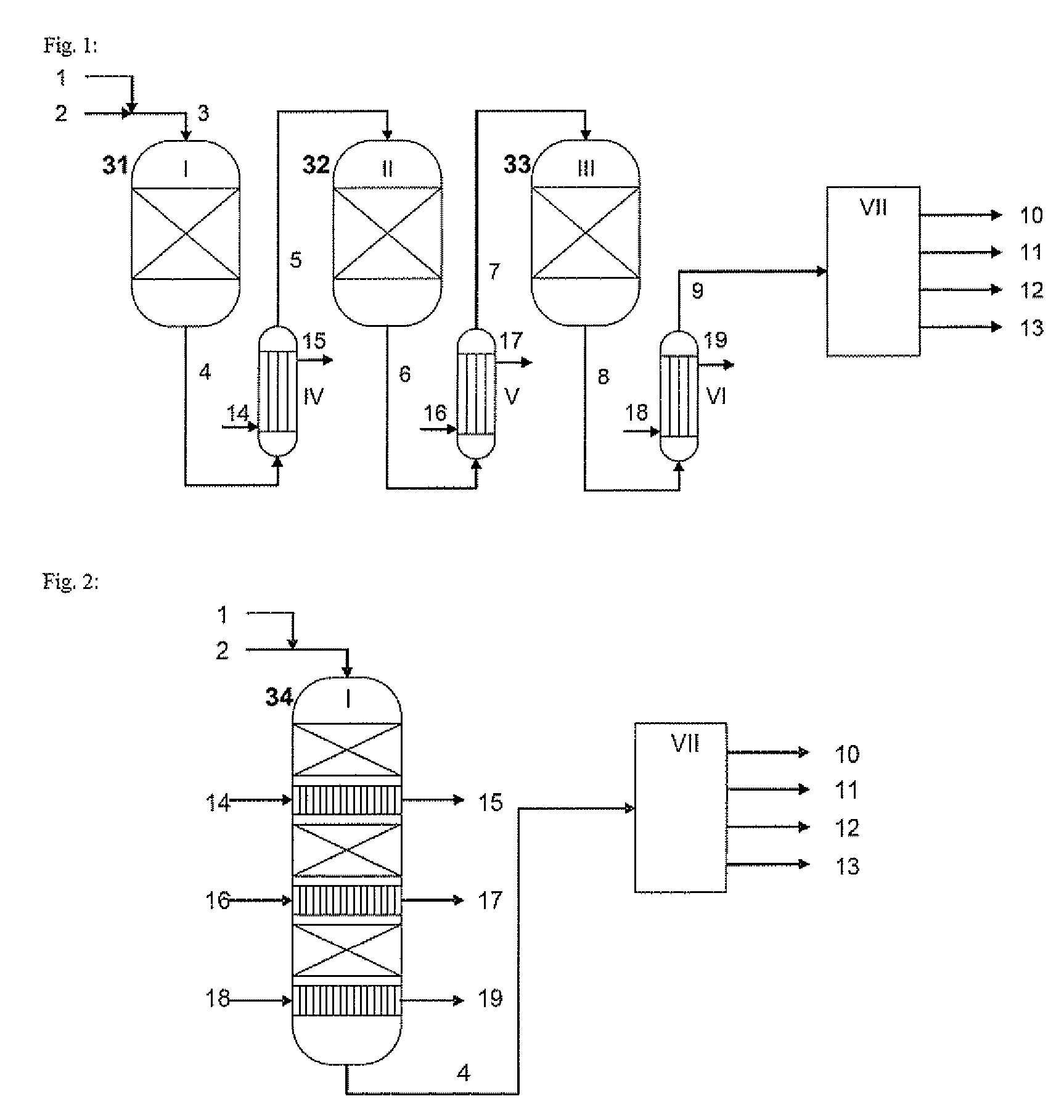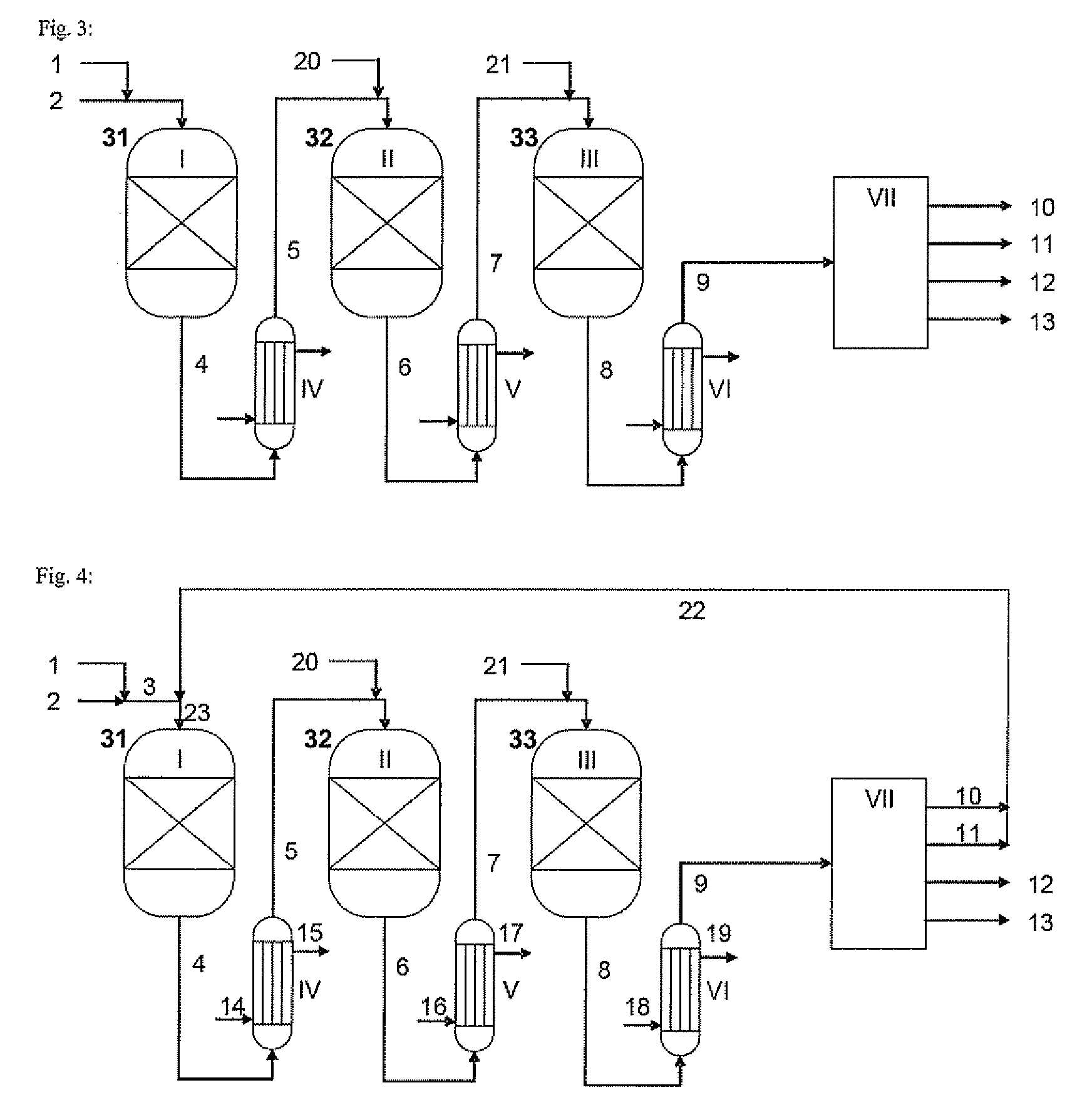Processes and apparatus for the production of chlorine by gas phase oxidation
a technology of gas phase oxidation and process equipment, which is applied in the preparation of chlorides, physical/chemical process catalysts, metal/metal-oxide/metal-hydroxide catalysts, etc., can solve the problems of permanent damage to the catalyst, impairment of yield, and difficulty in maintaining a constant temperature in the catalyst bed, so as to simplify the process design and operation
- Summary
- Abstract
- Description
- Claims
- Application Information
AI Technical Summary
Benefits of technology
Problems solved by technology
Method used
Image
Examples
example 1
[0084]FIG. 1 shows a process according to one embodiment of the invention with three catalyst beds in series divided between three separate reactors. The feedstock gases are mixed upstream of the first reactor and supplied to the reactor. After each of the reactors, the emerging reaction gas is cooled using a shell-and-tube heat exchanger of the conventional type. After emerging from the third heat exchanger, chlorine and water are separated from the product gas.
example 2
[0085]FIG. 2 shows a process according to another embodiment of the invention with three catalyst beds in series in an integrated reactor. The feedstock gases are mixed upstream of the reactor and fed to this reactor. Following each of the catalyst beds, the emerging process gas is cooled using a heat exchanger also integrated in the pressurised container for the reactor. After emerging from the reactor, chlorine and water are separated from the product gas.
example 3
[0086]FIG. 3 shows a process according to another embodiment of the invention with a layout that corresponds by and large to the one shown in FIG. 1. The difference is that, upstream of the second and third reactors in series, fresh feedstock gas is introduced into the cooled process gas from the preceding reactor.
PUM
| Property | Measurement | Unit |
|---|---|---|
| Temperature | aaaaa | aaaaa |
| Temperature | aaaaa | aaaaa |
| Temperature | aaaaa | aaaaa |
Abstract
Description
Claims
Application Information
 Login to View More
Login to View More - R&D
- Intellectual Property
- Life Sciences
- Materials
- Tech Scout
- Unparalleled Data Quality
- Higher Quality Content
- 60% Fewer Hallucinations
Browse by: Latest US Patents, China's latest patents, Technical Efficacy Thesaurus, Application Domain, Technology Topic, Popular Technical Reports.
© 2025 PatSnap. All rights reserved.Legal|Privacy policy|Modern Slavery Act Transparency Statement|Sitemap|About US| Contact US: help@patsnap.com


